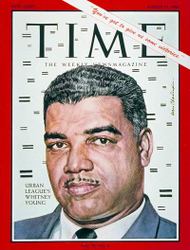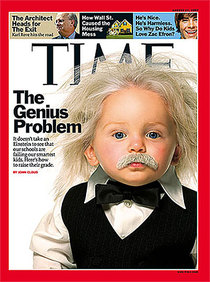
The best way to see the future, and the present, is to look closely at the past.
In supporting a generational view of history, I have looked closely at the 1960s as a rough analogy of our time. So today let me introduce you to August, 1967, through the pages of Time Magazine, and glean some hints from it as to what is happening today.
The month began with the Detroit riots, which echoed and reinforced what had happened in Watts two years before. The riot led Time to a closer examination of black leaders, and it chose to focus on Whitney Young of the Urban League. This was followed by a cover featuring yachtsman Bus Mosbacher, reinforcing that this was still a time of great prosperity. The month concluded with yet-another Vietnam cover.
Looking at that August 25 issue it’s important to note how little skepticism the editors had toward America’s aims. This was the high point in the political career of George Romney, Mitt’s dad, and his gains were made possible by a growing skepticism among Republicans of Lyndon Johnson’s Vietnam policy. Not the ends, mind you, simply the means. "All of Southeast Asia
is at stake today," George Rommey said, echoing Johnson’s Domino theory. Yet among Republicans, Romney was considered a dove.
This reflected public opinion, as only 41% of voters at that time
were willing to call the war a mistake, while 54% said the same thing
early this month about Iraq. In fact, we’re now at the point in public
opinion regarding Iraq we didn’t reach until late 1968 concerning
Vietnam.
But it’s also important to note how far Americans had gone regarding
social issues then, and how far they’ve gone the other way now. By 1967
Americans had become polarized on race, with the Whitney Young cover representing a search for someone who would speak for the "silent majority" of blacks who weren’t rioting.
Today’s media is just as far behind the changes in public opinion.
When Atrios complains that "DFH" who represent the vast majority aren’t
being heard, it was the same then. Time in August 1967 was just as
dismissive of Nixon and Wallace as they are today of Obama and Edwards.
And for the same reason. The idea of fundamental change is just not
something journalists feel obliged to account for.
But what really strikes me, looking at these old magazines, is how
further along the road to realignment we are today compared to where we
were then. Polls today consistently show that Americans want us out of
Iraq, they want something meaningful done about global warming, they
demand structural changes to the health care system, and they don’t
fear the gay. This is reflected in party identification, and in
head-to-head match-ups between potential candidates. The candidate
considered most left-wing of all the major Democrats, John Edwards,
actually does best in a general election race.
Yet, then as now, the structural changes taking place under the
surface, in the hearts and minds of Americans, are not being reflected
in the media. Then we had middle-aged men trooping off to see Whitney
Young. Now we have idiot women following Joe Lieberman, or telling us
that we should accept unsafe products because they’re cheaper.
You can argue, institutionally, that the conservatives of that time
were far ahead of where today’s Netroots are. But you would be wrong.
The Heritage Foundation was not founded until 1973. Democrats already have majorities in Congress that Republicans did not win until 1980.
The fact that the press ignores all this should not upset anyone.
The fact is, they always do. They ignored reality in 1967, just as they
ignore it now. And that’s the heart of The 1967 Game.











No, Dana, no. The year is not 1967. Trust me; I was there. You keep confusing great awakenings with secular crises such as the one we’re headed into at a high rate of speed.
The year is 1929.
No, Dana, no. The year is not 1967. Trust me; I was there. You keep confusing great awakenings with secular crises such as the one we’re headed into at a high rate of speed.
The year is 1929.